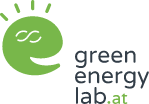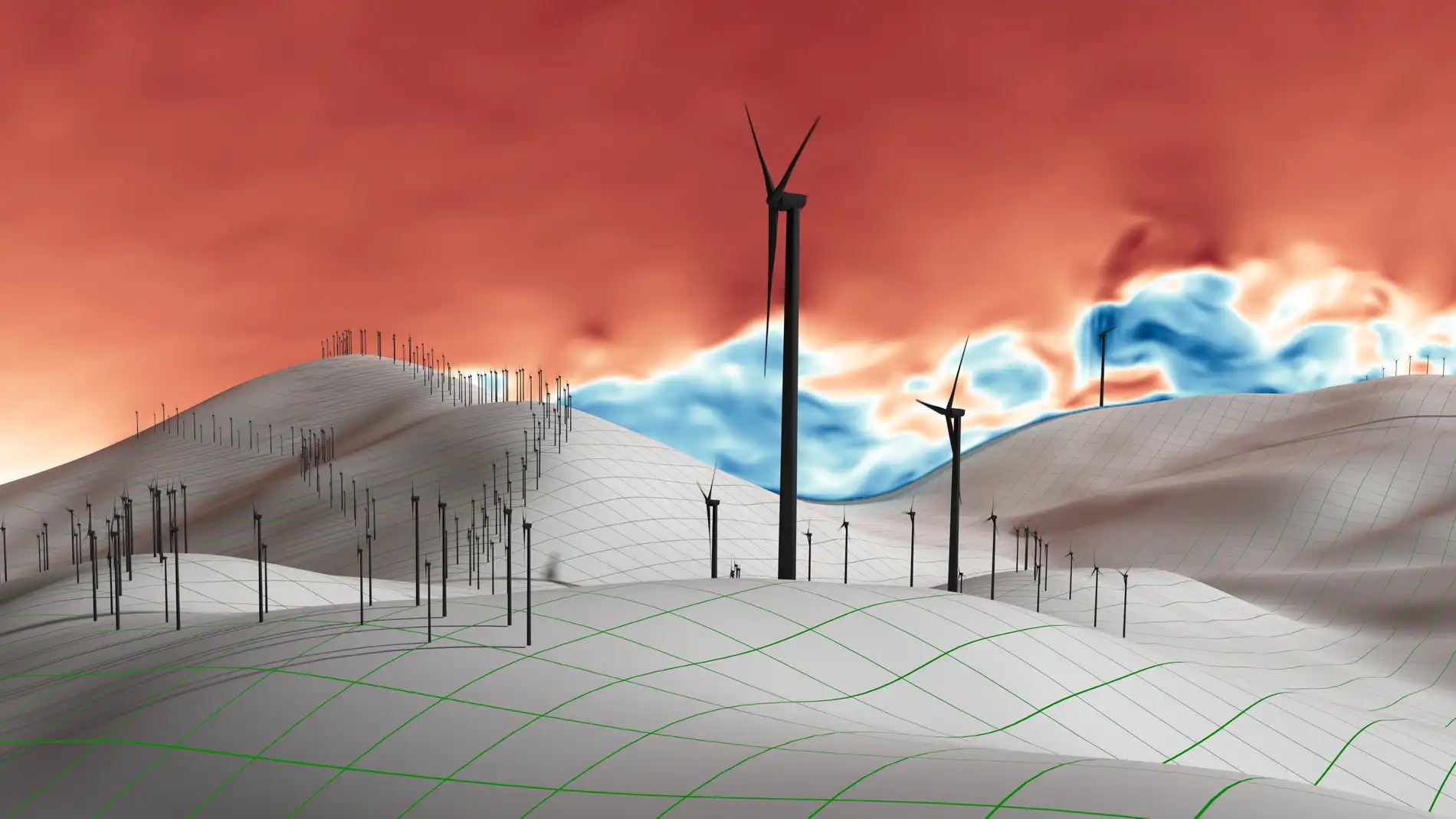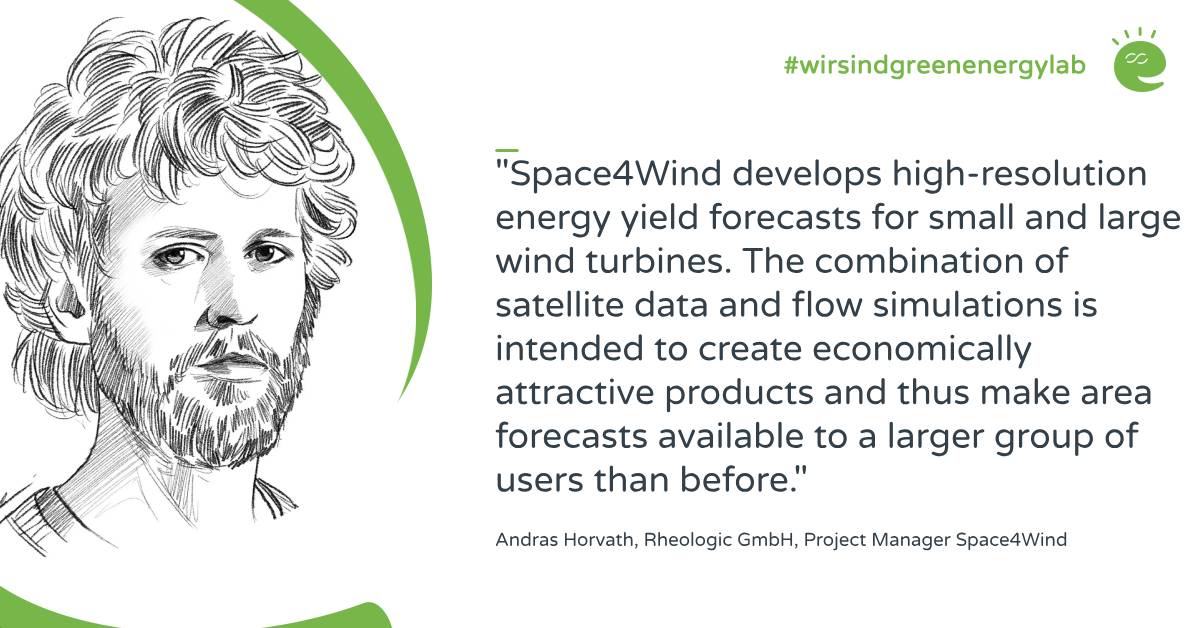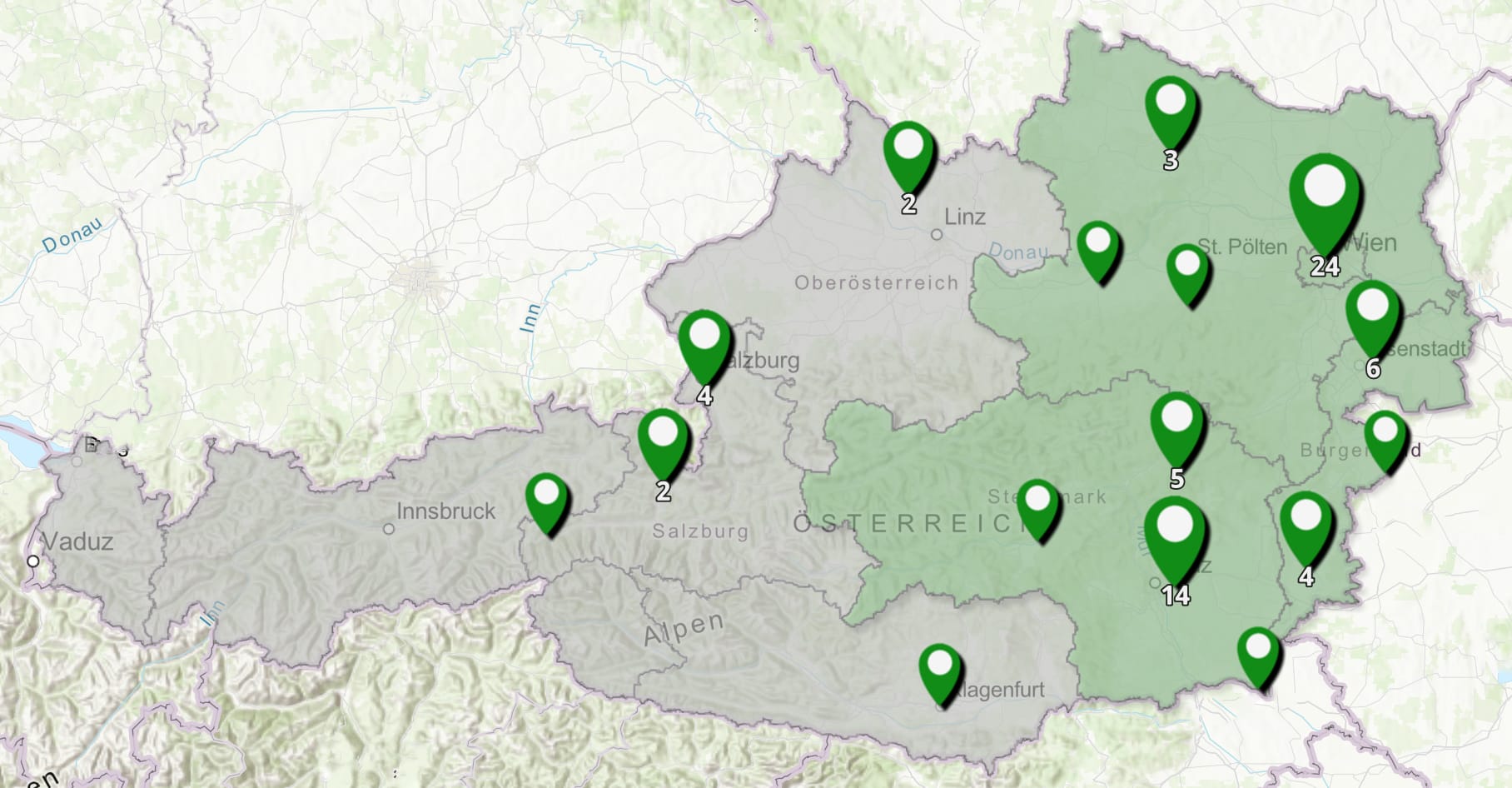Space4Wind
Surface roughness from earth observations to improve the site assessment for wind turbines
The Space4Wind project combined earth observation and flow simulation. This combination of very specialized disciplines is not necessarily obvious and has already aroused lively interest in specialist circles. With the help of high-precision surface models derived from satellite data, inputs for state-of-the-art simulation methods should be used to raise yield forecasts for large and small wind turbines above the current state of the art. The forecast data for wind turbine yields should therefore be easier to access and cheaper than previous products on the market. The Space4Wind project advanced the energy transition further with the development of new engineering tools.
Objective of the Space4Wind project
Space4Wind aimed at the combination of digital surface model (DSM) and digital terrain model (DTM) with land use classes (LULC) to derive high-resolution zonal roughness lengths (z0), the development of a process chain and the automation of satellite data fusion as well as the export to wind yield prediction based on CFD (computational fluid dynamics).
The aim was to achieve the highest possible prediction quality for the yield forecast of a site for the successful planning and operation of (small) wind turbines. The aim was to achieve this by reducing the cost of yield forecasts for small wind turbines by orders of magnitude and by opening up a huge potential market for decentralized energy production and energy communities, which requires the highest quality planning tools at comparably low costs.
Approach and methodology of the Space4Wind project
Small wind turbines combined with photovoltaics and battery storage systems, which in our latitudes complement the seasons, could be future levers for decentralized microgrid solutions. This is a viable path to renewable, sustainable and affordable electrical energy and energy communities for local use, storage and production. Small wind turbines (small wind turbines) run comparatively much closer to the ground than large wind turbines with typical hub heights of 80-120m above the ground. Upwind disturbances in the topography, vegetation, natural and man-made structures have a significantly greater impact on the achievable annual yield at hub height compared to large wind turbines. This makes it much more difficult to forecast the exact yield for small wind turbines close to the ground than for large wind turbines, where the effects of disturbances are more muted. For small wind turbines in particular, the planning costs (including site suitability and yield forecasts) must be orders of magnitude lower than for large wind turbines in order to be economically viable.
Links:
You are currently seeing a placeholder content of YouTube. To access the actual content, click on the button below. Please note that data will be passed on to third-party providers.




